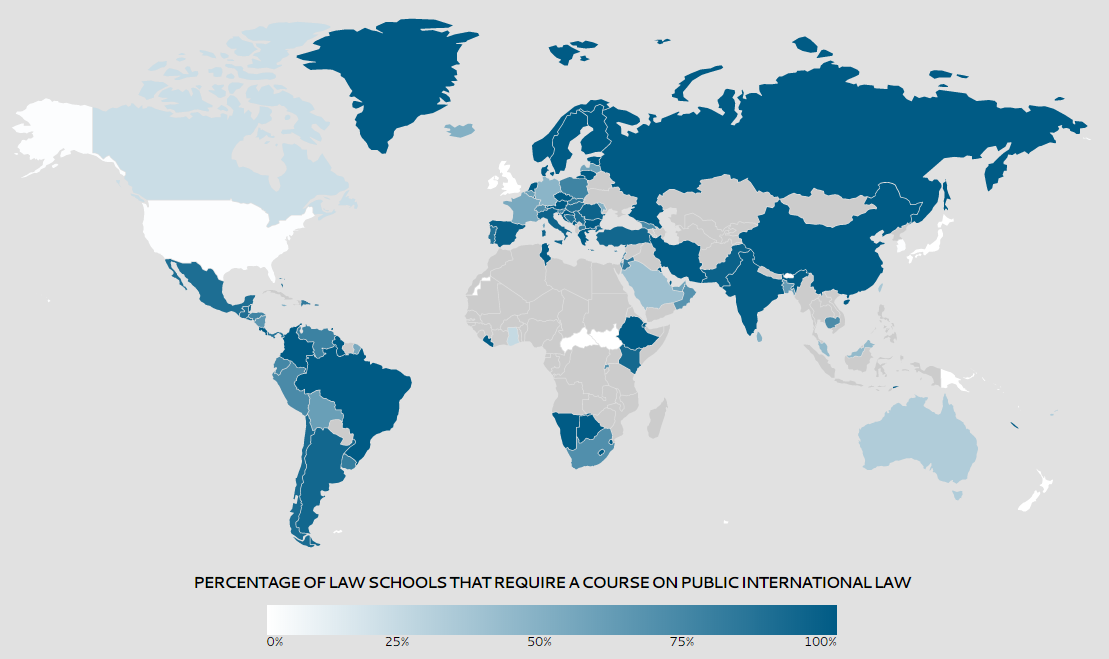By: Ryan Scoville
March 5, 2015
Recently I completed a project on the geography of international legal education. The goal was to figure out whether and to what extent universities and governments around the world require law students to study public international law. To carry out the research, I collected curricular information from official government documents, university websites, and, on some occasions, email correspondence with faculty members. The results, including links to online curricula of law schools around the world, are available at PILMap.org in the form of an interactive map.

The map shows that the study of international law is globally pervasive: in a majority of countries, all or nearly all law students must take at least one course on the subject en route to graduation. But the map also shows that compulsory education in international law is less than universal. For example, it’s uncommon in the United States and several of its common law counterparts. And there are some states, such as the Central African Republic, where functioning law schools apparently don’t exist. It’s fair to assume that only a comparatively small percentage of practitioners in these jurisdictions have received any formal training in the discipline.
The map also raises a number of intriguing questions, including:
- Do cross-national variations in international legal education affect the efficacy of international law? (In a new draft article, I argue that they probably do.)
- Why is compulsory training in public international law more typical in civil law jurisdictions than it is in common law jurisdictions? And relatedly, why do some states choose to mandate the study of international norms while others do not?
- What should we make of the fact that international legal education is pervasive in some of the countries with the worst reputations for human rights violations?
- Is there a nascent custom that requires states to train their lawyers on international law?
In my view, each of these questions calls for article-length treatment. But for present purposes, I’ll focus very briefly on the fourth by noting that state practice suggests a nascent custom might exist: A number of major jurisdictions, including Brazil, China, India, Pakistan, and Russia, plus a host of other countries, require or at least recommend by statute or regulation that universities teach international law as a compulsory course. In addition, the UN General Assembly has repeatedly emphasized the importance of this area of study in a series of resolutions dating back to the 1940s. The first of these, from November 1947, “request[ed]” that the governments of Member States take “appropriate measures to extend the teaching of international law in all its phases, including its development and codification, in the universities and higher educational institutions of each country that are under government control or over which Governments have some influence, or . . . initiate such teaching where it is not yet provided.”
Finally, treaties such as the Convention Against Torture specifically call for education on the norms they codify. Collectively, this evidence suggests that many states are engaged in the practice of compulsory training, that they have used various legal instruments to manifest their belief in the importance of this practice, and that they’ve consistently viewed training as important over the course of several decades. The primary hurdle, it seems, is the issue of opinio juris: I’m unaware of any evidence of a belief that compulsory training in international law is generally required as a matter of international law. Perhaps recognizing and labeling the emergent practice will change that over time.
Thanks to Professor Sadat for inviting me to post on this blog. I appreciate it.
Ryan Scoville is an assistant professor at Marquette University Law School.
